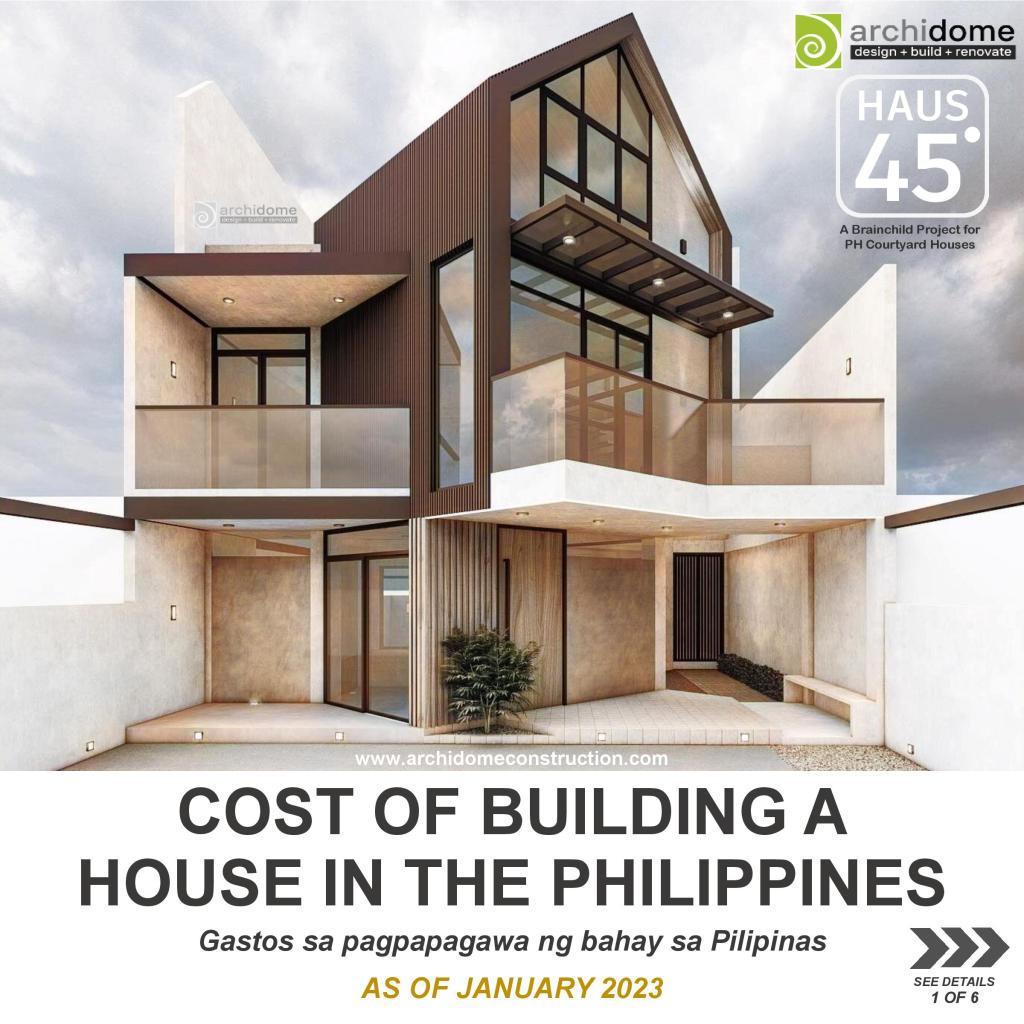Weekly Blog 0009
Plants vs. Buildings : Can nature and buildings co-exist?

Since I’ve discussed the effects of inflation on the construction industry in my last blog post, I think this week is an opportunity for me to discuss this interesting topic. How much will it really cost to build a house in the Philippines? The quick and short answer is, the cost will depend on various considerations such as material specifications, space requirements (no. of floors, rooms, toilet & bath), level of finishing, type of construction, and even the location (if within Metro Manila/province; if inside a subdivision).
Normally, there are two methods on how builders/contractors compute the cost.
First is the Area Method aka “per sqm” method. This is normally used if the project is still in the early stage. The per square meter computation is just a fast guide or an early assumption for clients to be aware of the Probable Construction Cost (Ballpark figure) and the basis for computation of professional fees. How to compute? They will estimate the Construction Floor Area and multiply it with the rule-of-thumb pricing per sqm. You may review the photos I’ve provided as your guide.
Instead of writing a lengthy blog, I exerted more effort into explaining it visually. I provided photos with a lot of information for you to have a good grasp of this method. My example is one of our house models for our think tank project on innovating Modern Filipino Homes.
For this year 2023, the decent or standard output starts as 35,000 pesos per sqm.
Second is by detailed estimating. This is normally the final basis and used if the final construction drawings are already done. IMO, this is in your favor as a client. Plus, it is also black and white agreement. You may also opt to remove or upgrade some of the items/scope of work. I think I will discuss it in detail in another post.
Everyone dreams of building their own house. Most of us realized its significance when we experienced the series of pandemic lockdowns. Aside from the financial and legal aspects, you must research. It’s better if you can communicate if you have an idea of what you want. This is also your protection before signing the contract. It’s highly recommended (“a must” is a better term indeed) to consult with professionals such as architect, engineers, and contractors.
If you read success stories for house construction without seeking professional services, I suppose you’ve also read tragic stories about earthquake damages of structures due to code violations and substandard materials. Blueprints are signed and sealed because the professionals are liable for any malpractice or building code violations. Article 1723 of the Civil code states the fifteen years liability of the engineer, architect, and contractor for damages in any structure by reason of defects in its construction or use of inferior/substandard materials. In short, their licenses (their bread and butter) are at stake when they sign and seal your plans. This is not mahal ang pirma (expensive signature). They are betting on their livelihood for making sure that your house was built with quality and code compliance.
If you want to discuss your project, you can fill-up our Prospective Client Form for a free estimate!

About the author
Genna Domingo is the Principal Architect & Managing Director of Archidome Construction. She is a graduate of Mapua University and fourth placer in January 2019 Architecture Licensure Examination. She is passionate about design & build practice, renovation, tropical architecture, and urban design.







